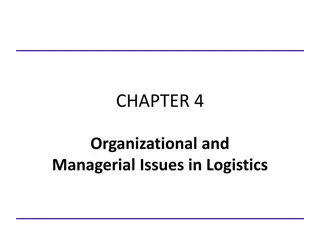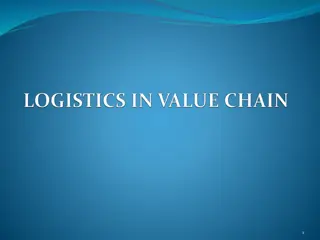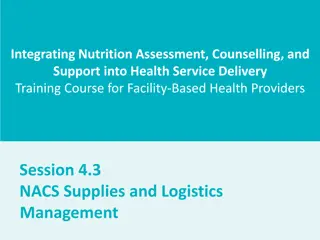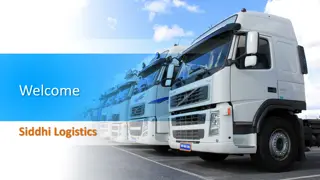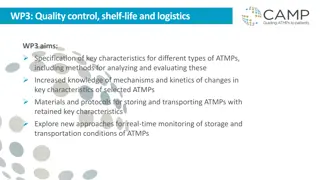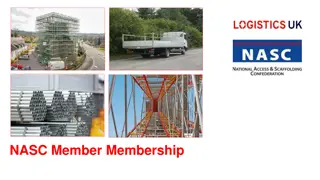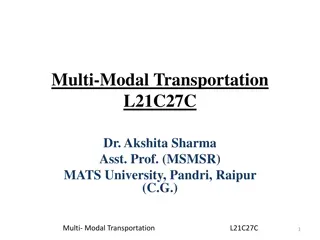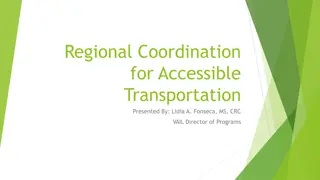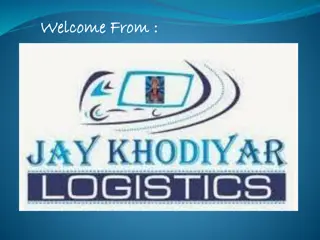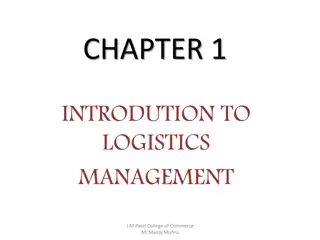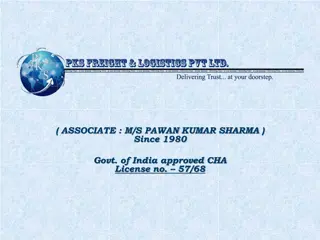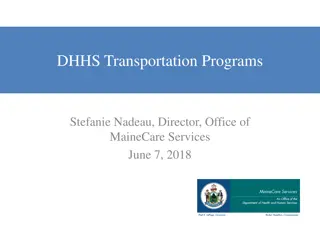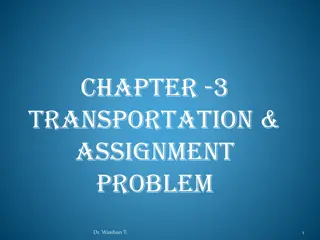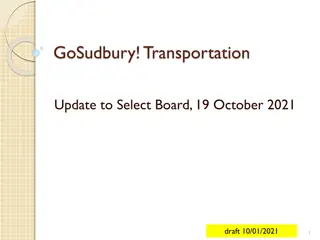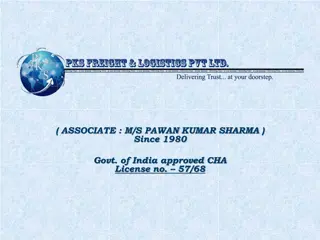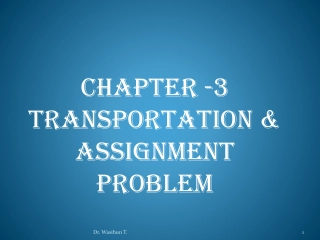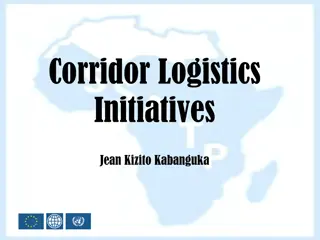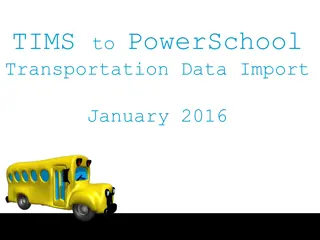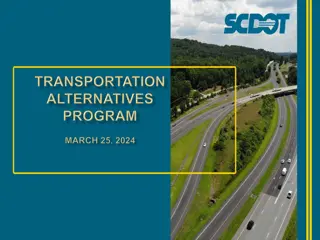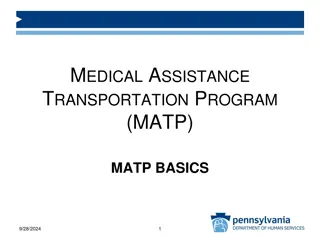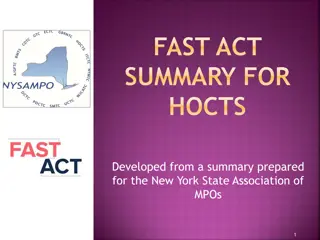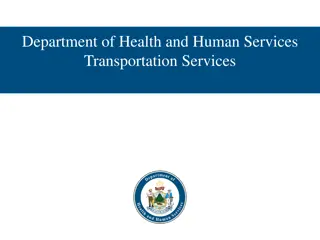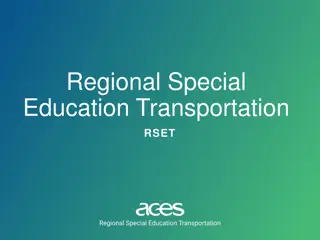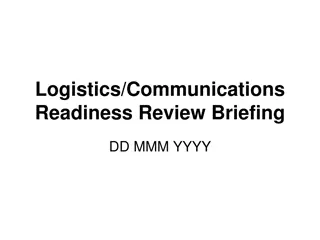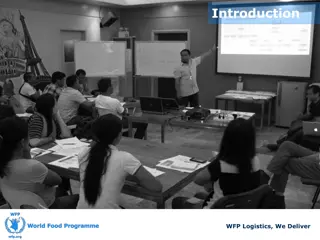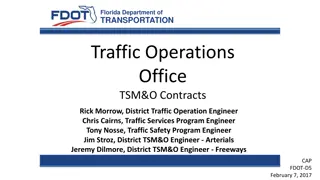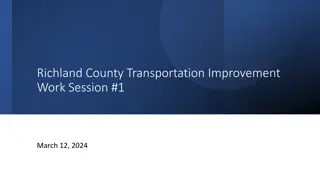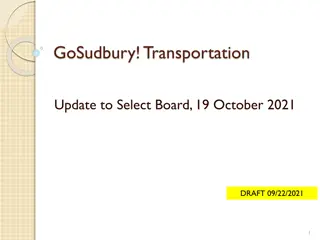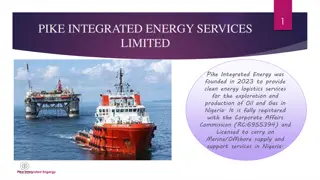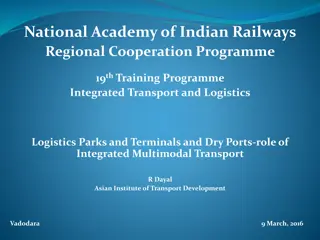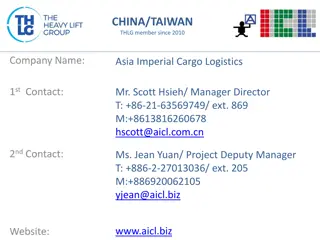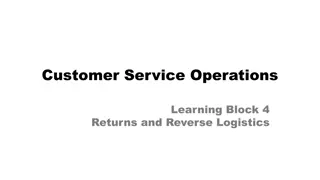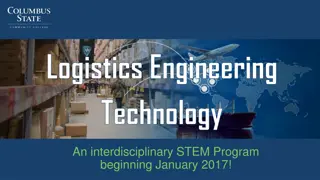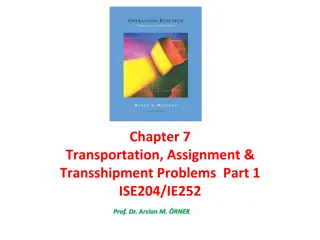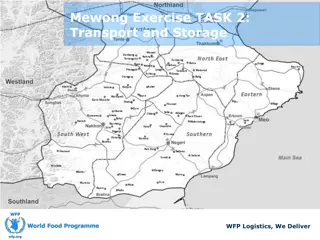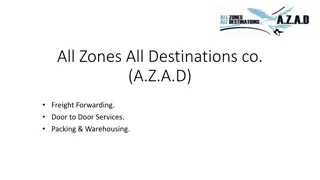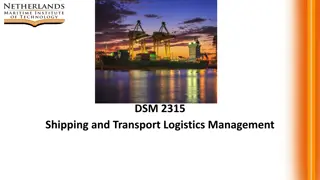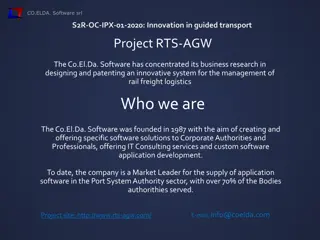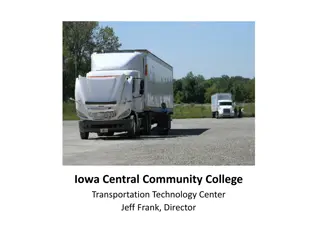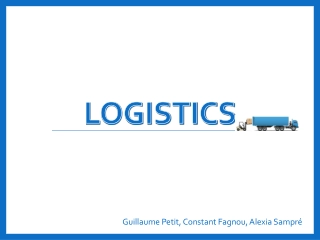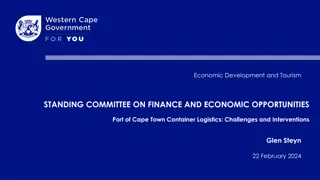Comprehensive Overview of Transportation in Logistics Management
Transportation plays a crucial role in logistics management by facilitating the movement of products and goods efficiently. It involves various modes like air, land, rail, road, and water transport, each with its advantages and disadvantages. The objective of transportation is to enhance port capacity, make road and ferry transport financially sustainable, improve air transport safety, and more. This article explores the different modes of transportation and the benefits they offer in the logistics chain.
Download Presentation

Please find below an Image/Link to download the presentation.
The content on the website is provided AS IS for your information and personal use only. It may not be sold, licensed, or shared on other websites without obtaining consent from the author. Download presentation by click this link. If you encounter any issues during the download, it is possible that the publisher has removed the file from their server.
E N D
Presentation Transcript
CLASS-BBA FINAL(VI SEM.) SUBJECT-LOGISTIC MANAGEMENT. TOPIC-TRANSPORTATION DEPT. OF COMMERCE & MANAGEMENT I.B. (PG) COLLEGE, PANIPAT UNIVERSITY- KURUKSHETRA UNIVERSITY, KURUKSHETRA. BY PROF.-SONIA VIRMANI
INTRODUCTION Transportation is the movement of products from one node in the distribution channel to another. Definition:-Transportation is the movement of humans ,animals and goods from one location to another. Transport include air ,land(rail and road),water,cable,pipeline and space.
OBJECTIVE OF TRANSPORTATION Improve port capacity so that ships of greater draft can enter. Put road and ferry transport on a financial basis that is more self sustaining. Improve international transport airport capacity so that larger aircraft can land. Adopt measure to improve transport safety in all modes.
MODES OF TRANSPORTATION AIR TRANSPORT LAND TRANSPORT RAIL TRANSPORT ROAD TRANSPORT WATER TRANSPORT OTHER TRANSPORT
AIR TRANSPORTATION It is the movement of passengers and freight by any conveyance that can sustain controlled flight. Advantages:-Faster fulfillments of customer orders. Reduce lead time for supplier. Service level improved. Disadvantages:-High cost incurred. Problem of flight delay. Suppliers and customers are not always located near the transport.
LAND TRANSPORTATION Rail transportation:- It is a means of conveyance of passengers and goods by way of wheeled vehicles running on rail track, known as a railway and rail road. Advantages:-Faster and quicker. Ability to carry high capacity. Safe mode of transportation. Disadvantages:-Unforeseen delay or accidents. Suppliers are not always located near the rail . Completely govern by the time table and schedule of railways.
ROAD TRANSPORT It can be categorized as:-Heavy vehicle transport for goods. Light vehicle transport for goods. Public or private transport for human being. Advantages:-Ideal for short distance. Cost effective. Fast delivery. Disadvantages:-Delay due to traffic jams. Dependability on weather. Pollutes the environment.
WATER TRANSPORT It is the process of transport that a watercraft .Such as a boat ,ship or sailboat makes over a body of water such as a sea, ocean ,lake or river. Advantages:-Ideal for transporting and bulky goods. Suitable for products with long lead time. Cheaper cost. Disadvantages:-Long lead time. Difficult to locate goods in transit. Problems arising due to bad weather.
OTHER TRANSPORT PIPELINE TRANSPORT:-It sends goods through a pipe, most commonly liquid and gases are send. Advantages:-Mass movement of goods i.e.liqiud and gases. Cheap cost for large volumes. Disadvantages:-Not suitable for solids. Large investment required.
OTHER TRANSPORT Cable transport:-It is a broad mode where vehicles are pulled by cables instead of an internal power source. Advantages:-Mass movement of goods. Easy and fast availability. Disadvantages:-Limited applicability. Operating cost high. Large investment requirement.
TRANSPORT PROBLEMS High cost of building and maintaining roads. Low capacity for the land area used. Poor safety(causes deaths and injuries) Major source of pollution:-air,noise,light,water. No stability in policy relating to highway development in the country.
TRANSPORTATION NETWORK IN INDIA A transportation network is a network of roads,streets,pipes,power lines or nearly any structure which permits either vehicular movement or flow of some commodity. Transport network analysis is used to determine the flow of vehicles through a transport network, for example walking and car, to model multi model journeys. Transport network analysis is with in the field of transport engineering. India s transport sector is large and diverse, it caters to the needs of 1.1 billion people. The sector contributed about 5.5 percent to the nation s GDP, with road transportation.


